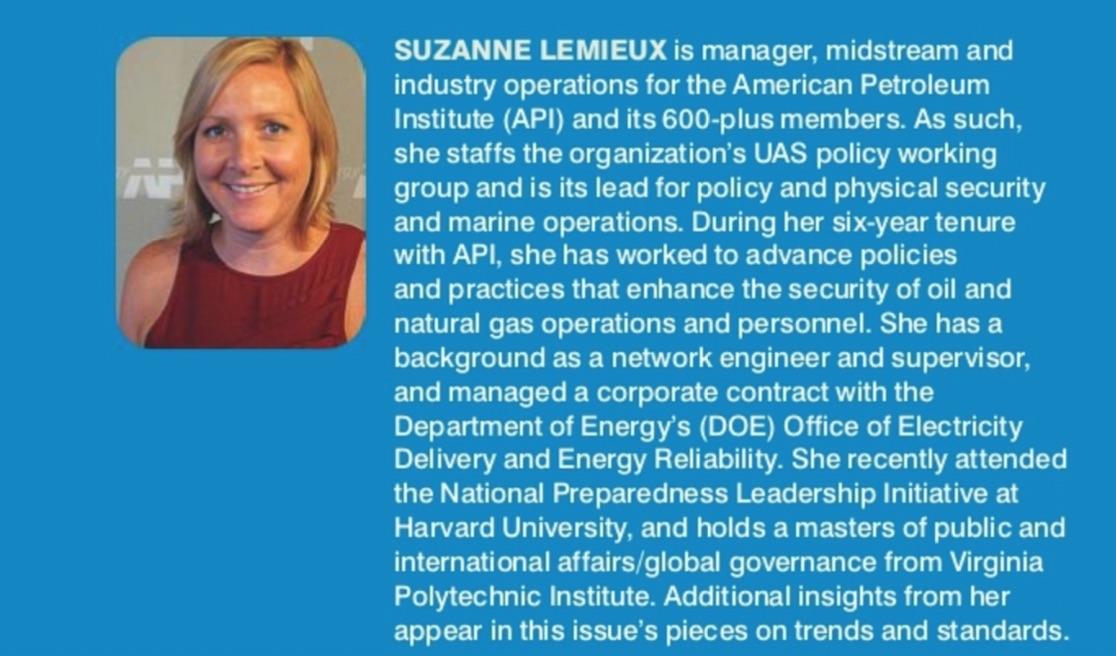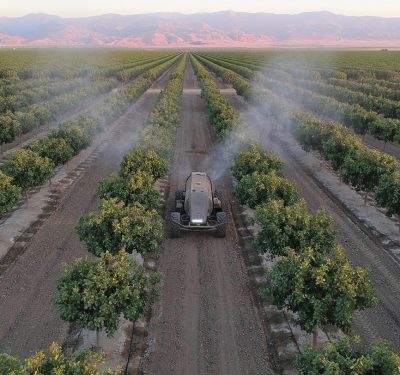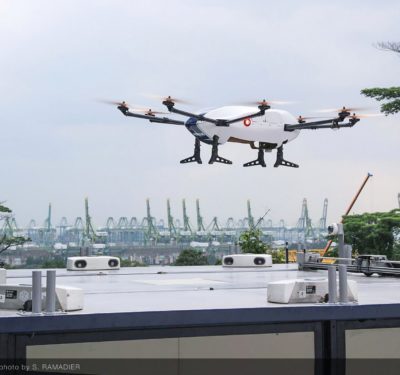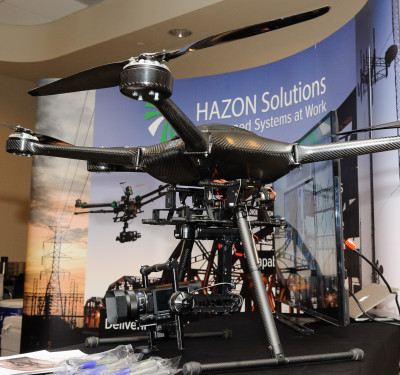
Q: What will be the new or transformative UAS use case in your energy space?
A: Long-range pipeline overflights are now usually done with a fixed-wing aircraft or a helicopter, with a person looking out the window to take pictures. Taking that person out of the mix would reduce risk. It’s not just about the drones, but about the sensors as they advance in capability and shrink in size. Programmed autonomous flights to measure erosion, shifting topography and other conditions can collect and standardize data that can then be analyzed by a machine, as opposed to a person. A camera taking imagery and a sensor looking for leaks can provide huge advances for safety and detection. Right now, sensors are where our members are looking to go. But the cost is quite high, as with any product in its initial stages of market entrance. Companies already are using expensive equipment; they’re not going to abandon the current way of doing things to buy an $85,000 sensor. Over time and with more competition, prices will go down.
Q: What are the key UAS priorities for your members?
A: The key priorities right now are remote ID and UTM, which we think will allow the full commercial operation of drones in the air space. They will drive safety and expand uses, including line of sight.
Q: You’re especially charged with security. What needs to happen to both increase security and make it flexible?
A: We really fall back to remote ID. We don’t see the FAA giving up any ownership of the airspace, and even with counter-UAS you’d still need remote ID and UTM to identify those aircraft and where they are operating. We have some systems of ID already. Remote ID and UTM will allow us to visualize and identify in the airspace.
Q: What does the industry hope for from the FAA?
A: That it comes out with a rule for remote ID sooner than later, and that it is something that’s workable. They have a significant challenge that I don’t envy at all. They listen to the concerns of stakeholders that they look to protect with safety and security while also allowing for the expansion of operations. Together, we can put out messaging about safety, retrofits and informing the clueless and careless.
Q: What do you see going forward?
A: We’ll see a lot more standardizations of practice across the vendor community. At API, we’ve not included drones in any of our standards yet, because the regulatory environment is somewhat restrictive. It takes about two years to write or implement a standard, so if the environment is going to change or expand dramatically over the next couple of years, you don’t want to put in a lot of effort now that will become moot. We’re looking to see how we can integrate these systems to safely reduce risk and improve return on investment. Safety is our number one priority; anywhere we can reduce risk, that’s where our members want to go.






